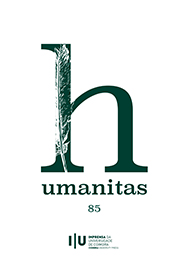Early roman pottery from the fish salting plant on Francisco Barreto Street in Ossonoba (Faro, Portugal)
DOI:
https://doi.org/10.14195/2183-1718_85_10Keywords:
Pottery, Roman times, Ossonoba, Archaeological context, Fish salting plantAbstract
The archaeological excavation conducted on Francisco Barreto street in Faro (Portugal) led to the identification of a new fish salting plant within an industrial area of the ancient Roman city of Ossonoba. This excavation yielded an abundant group of materials, the study and publication of which will enhance our understanding of this complex. Some of the pottery have already been published, including part of the amphorae collection and fine late antique tableware.
In this study, we present the contextual analysis of a set of early roman fine tableware that has allowed us to define the site's construction chronology and to refine the operational phases of the factory. We analyse the ceramic productions, their forms, and chronologies. Through ceramic quantification and stratigraphic study, four contexts are established corresponding to four distinct phases, redefining the occupation sequence of the site.
The collection examined and presented in this poster is noteworthy for its abundance and diversity in forms and productions, reflecting the broader site characteristics. Among the pottery identified are Italian and South Gaulish terra sigillata, as well as Hispanic wares from various workshops. Additionally, Peñaflor type pottery, lamps, and thin-walled pottery are included. This analysis has enabled us to establish Ossonoba's trade connections and to contextualize them within the Algarve region. These findings, combined with others from southern Portugal, will help to improve the characterization of Roman Algarve.
Downloads
Downloads
Published
Issue
Section
License
Copyright (c) 2025 Humanitas

This work is licensed under a Creative Commons Attribution 4.0 International License.
Authors retain copyright and grant the journal right of first publication with the work simultaneously licensed under a Creative Commons Attribution License that allows sharing the work with recognition of authorship and initial publication in Antropologia Portuguesa journal.










